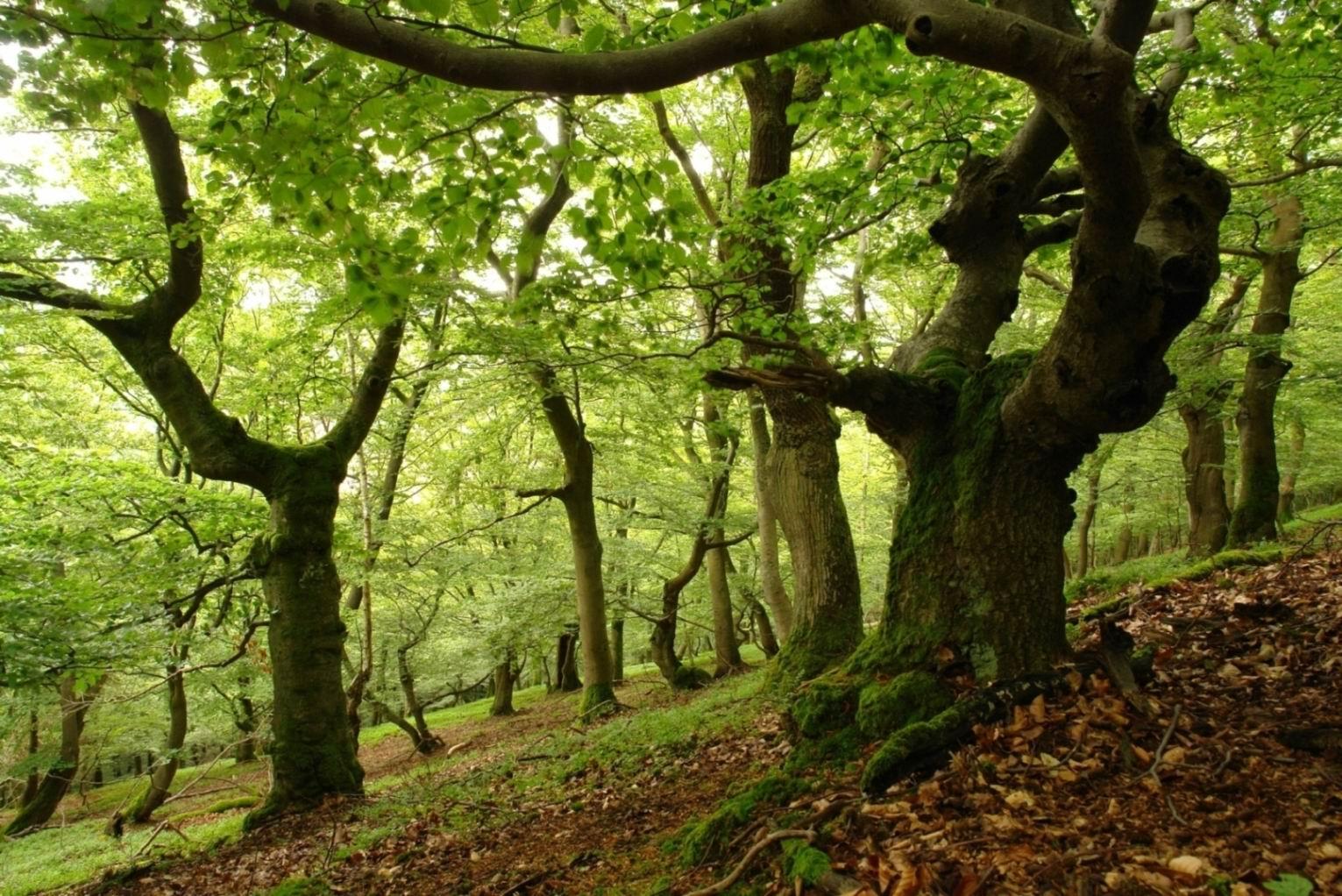‘The Hidden Life of Trees’ asks us to rethink our relationship to the world’s forests
Trees in the primeval forests of Germany are some of Earth's oldest living organisms. They can provide unique insight into the inner workings of forests.
Forests contain much more than meets the eye, according to German forester, and now author, Peter Wohlleben.
In his thought-provoking book, The Hidden Life of Trees, Wohlleben writes that within the roots of trees are active, brain-like processes that allow trees to communicate with and learn from other trees.
Forests are social networks in which individual trees warn each other of impending dangers, such as insect infestations, and care for their sick and elderly — and trees live shorter lives if they grow in isolation and can’t connect with each other through this social network, Wohlleben writes.
Wohlleben tends a forest in the western part of Germany, in the Eifel Mountains, not far from the Belgian border. He begins his book with a chapter called ‘Friendships’ that describes how he stumbled upon a remarkable centuries-old tree stump. The stump was still living, but without any green leaves on it.
“That seemed to be impossible, because a tree is a living being that burns sugar in its cells, like humans do,” Wohlleben says. “After 400 years, every molecule of sugar should have been gone. The only explanation was that this old stump was supported by its neighbors.”
That may sound incredible, Wohlleben says, but his research and observations support the idea that a forest is a social society in which “each tree fights for each other so the whole forest will survive. Every tree is interested in keeping its neighbors alive,” he says, “because together they create a special climate, which is cool, which is humid, where every tree feels comfortable.”
The relationship among trees is similar to a family sturcture, Wohlleben suggests. He cites research by Suzanne Simard of the University of British Columbia which found, for example, that “mother trees are able to distinguish their ‘children’ from other young trees, and that they are also have favorite children, which they feed more than other children,” Wohlleben says.
Wohlleben also references research from the the University of Bonn, which finds “brain-like structures” in the root tips of trees. These structures don't resemble a human brain, as we currently understand it, but trees' capacity to communicate with each other through their roots and leaves and to learn from experience strongly suggest brain-like activities. Trees can remember bad droughts, for example, and regulate their water intake accordingly, Wohlleben says.
In 2003, Germany had a very bad summer drought. Trees that were unaccustomed to dry summers suffered badly. Afterwards, these trees changed their behavior. They knew not to use too much water in spring and to save water in the event of another dry summer. “So, a tree can remember what has been going on in the past and change its strategies to a new way of water consumption, and that was something very surprising,” Wohlleben says.
Trees are somewhat slow communicators. Electrical signals in their tissue travel perhaps one or two seconds per inch. Therefore, they may “react” to events within minutes, hours or even days. Because electrical signals may take several minutes to travel from the upper tree down to the roots, trees also communicate via chemical signals sent out from the leaves.
For example, trees can send out a chemical signal that will warn of an insect infestation. The trees around may smell the signal, and understand that a certain beetle, for example, is attacking a neighbor tree. “When an insect attack is going on, a tree may bring poison into its bark and store this memory, and in the next situation like this they may react much faster,” Wohlleben says.
Understanding forests as a social network of families can help foresters manage them better, Wohlleben says. Healthier trees not only produce more timber, but will survive longer and be around for future generations. Even just thinning out a forest and leaving 50 percent of the trees untouched, destroys the trees’ social network. “When you do this, you change a tree from being social to being “single,” Wohlleben explains. “Those trees suffer. They don't get very old. For example, a beech may grow as old as 400 years, and when you make a thinning in such a forest, this beech will die at around 200 years, nearly half the age which is natural.”
Despite criticism for being a bit heavy on the anthropomorphizing of trees and a bit too light on some of the hard science, Wohlleben’s book struck a chord in Germany and has been hugely popular. He believes this speaks to a powerful need for people to feel more connected to nature.
Wohlleben hopes his book will bring people to a new and deeper understanding of our trees and forests and, even better, to a new way of interacting with them that will preserve this precious resource for future generations.
This article is based on an interview that aired on PRI’s Living on Earth with Steve Curwood.
